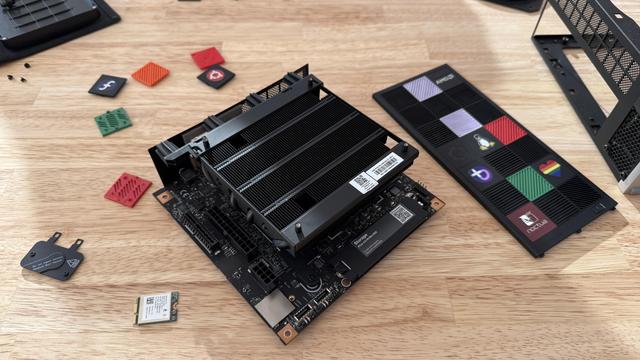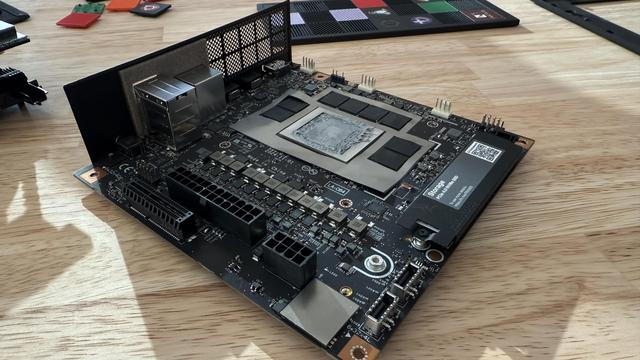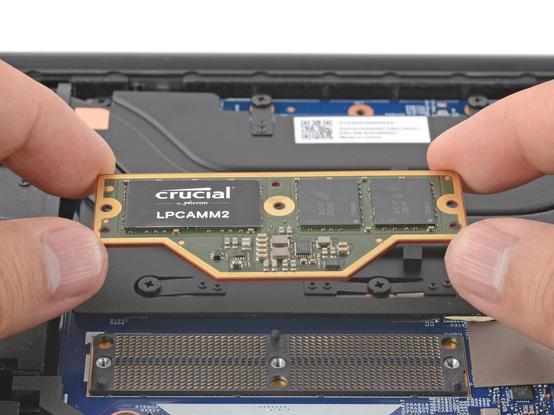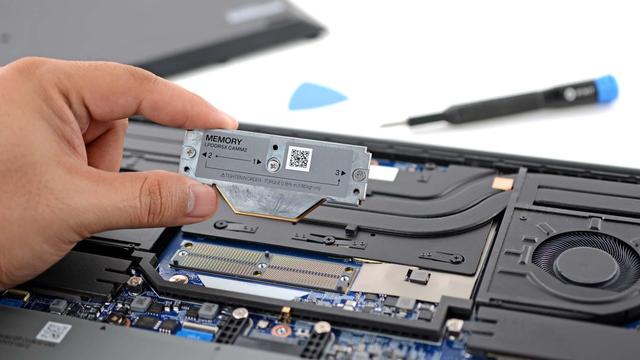They’ve committed to providing parts, manuals, and even schematics. Schematics! When was the last time we saw a desktop manufacturer release schematics?! Genuine question, we’d love to know!
Shout that from the rooftops! I've upgraded almost every machine I've ever had.
They already said in the Linus Tech Tips this was a limitation of what was immediately possible, and they themselves want the same thing.
@iFixit @frameworkcomputer CAMM memory and advanced nanoguard coating are the two things I wait for in the laptop space - the first one to implement both of them is gonna reap the benefits Toyota once did by becoming a synonym for a reliability.
I hope Lenovo will make a thinkpad p14s gen 6 with ryzen 395, camm memory and waterproof coating to make an ultimate laptop for me.
Compute has by far outgrown memory bandwidth.
There are good technological reasons why Apple will never support upgradable memory and for the PC world the only way to continue to support upgradable memory is, if PCs would support tiered memory with both high bandwidth soldered and lower bandwidth upgradable modules.
@mxk @alihan_banan @iFixit @frameworkcomputer Modern high speed connectors are very good. DRAM isn't even close to pushing the limits of them, although the DIMM form factor itself is definitely running out of steam. I look forward to seeing what happens with CAMM2.
I expect to see innovation on the DRAM PHY side of things too. GDDR6x uses PAM4 and I wouldn't be surprised if eventually (perhaps as part of a move to an area array form factor like CAMM with more pins) we see them go differential, maybe even using bonded serial lanes like PCIe rather than the classic parallel DRAM architecture (the last holdout in the PC space that hasn't gone to multilane serial yet).
Tangentially related I expect the PCIe card edge connector to eventually be replaced by a coaxial flyover cable using something like Samtec FireFly, keeping the card edge for initial enumeration and power only. Not sure what generation it'll happen but I'm sure it'll happen eventually.
@mxk @iFixit @frameworkcomputer idk if replacing DRAM with HBM would be good. But cache limitations are cruel. I remember Semianalysis has written that TSMC and most of computer scientists got stuck with SRAM scaling up - they can't get it smaller even with modern tech nodes and they fear that cache is going to be the main bottle neck in the transistor count growth.
But 3D V-cache and chipplet approach AMD seems like a good workaround to me.
@mxk @iFixit @frameworkcomputer sounds like another CISC vs RISC, but now with memory typing.
Or industry will make great in memory computation or just to move to quantum tech before this battle happens ¯\_( ͡° ͜ʖ ͡°)_/¯
@iFixit @frameworkcomputer this was also very much the sentiment we saw from framework, which is why my respect for them has only increased.
I want there to be an alternative to the Mac studio. This gives us that, at an incredible price.
And framework expressed their desire to do upgradeable, and they've given us every reason to believe that they're going to deliver an upgradeable system as soon as it's feasible
@rexxdeane @iFixit @frameworkcomputer I get that going that deep into the weeds isn't for everyone, but there are varying bars for DIY. I have a microscope and a hot air station (under £200 for both), all I'd need is the stencil for the particular RAM chip.
Why do I have kit like that? Because it irked me that components worth literally pennies dying can kill expensive tech.
@iFixit @frameworkcomputer It should, but practically, you've right then and there demonstrated that even the upgradeability champions can be convinced/bought/bribed to proclaim its disadvantages. And for what?
For anything more than a seat on the #GenAI / #ollama hype train?
@aspensmonster @iFixit @frameworkcomputer "their customers" isn't necessarily a thing though.
If these are new customers, that's fine too
I have a notebook that would still work, but because the ram is soldered on and has a defect, its not reliable anymore. It angers me, to be honest. Soldiered ram is the wrong way to go.
@frameworkcomputer
I love upgradeable electronics.
But to reduce power consumption we are now at the point that we have to reduce the lateral distance data is traveling. Inside a processor feature shrink did this now between dies is the bottleneck. Memory on package helps but on the cost of upgradeability.
More attention should take to the software side to allow upgrades to the recent version and still keep old hardware.
My Linux still runs on a 6 year old NUC with 5 watts idle.
@iFixit
@ProfessorBoop @iFixit @frameworkcomputer
The schematics in theory could let you upgrade the RAM if you're good with a soldering iron no?
Never done that myself so idk if this is a legit option for these boards or not










